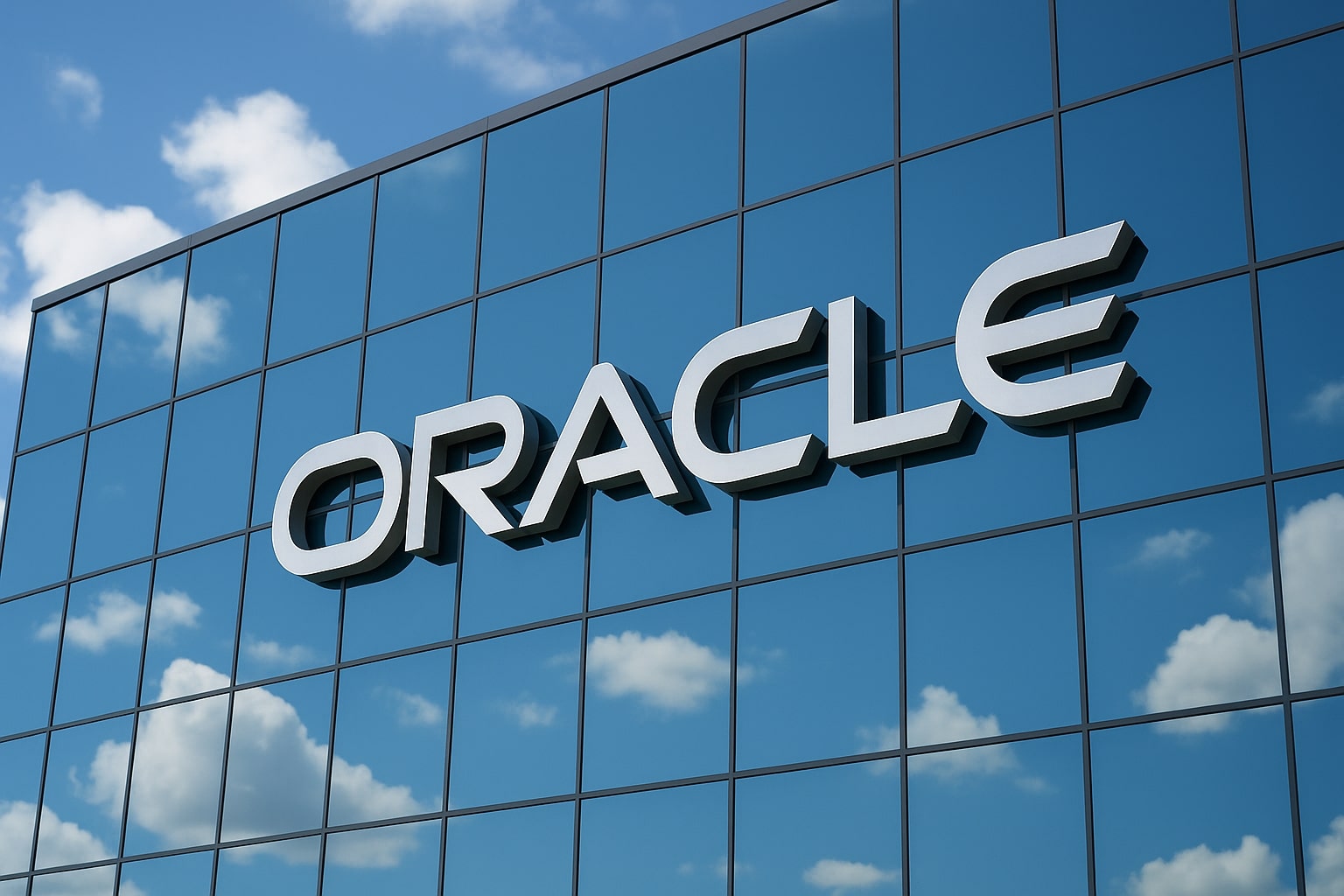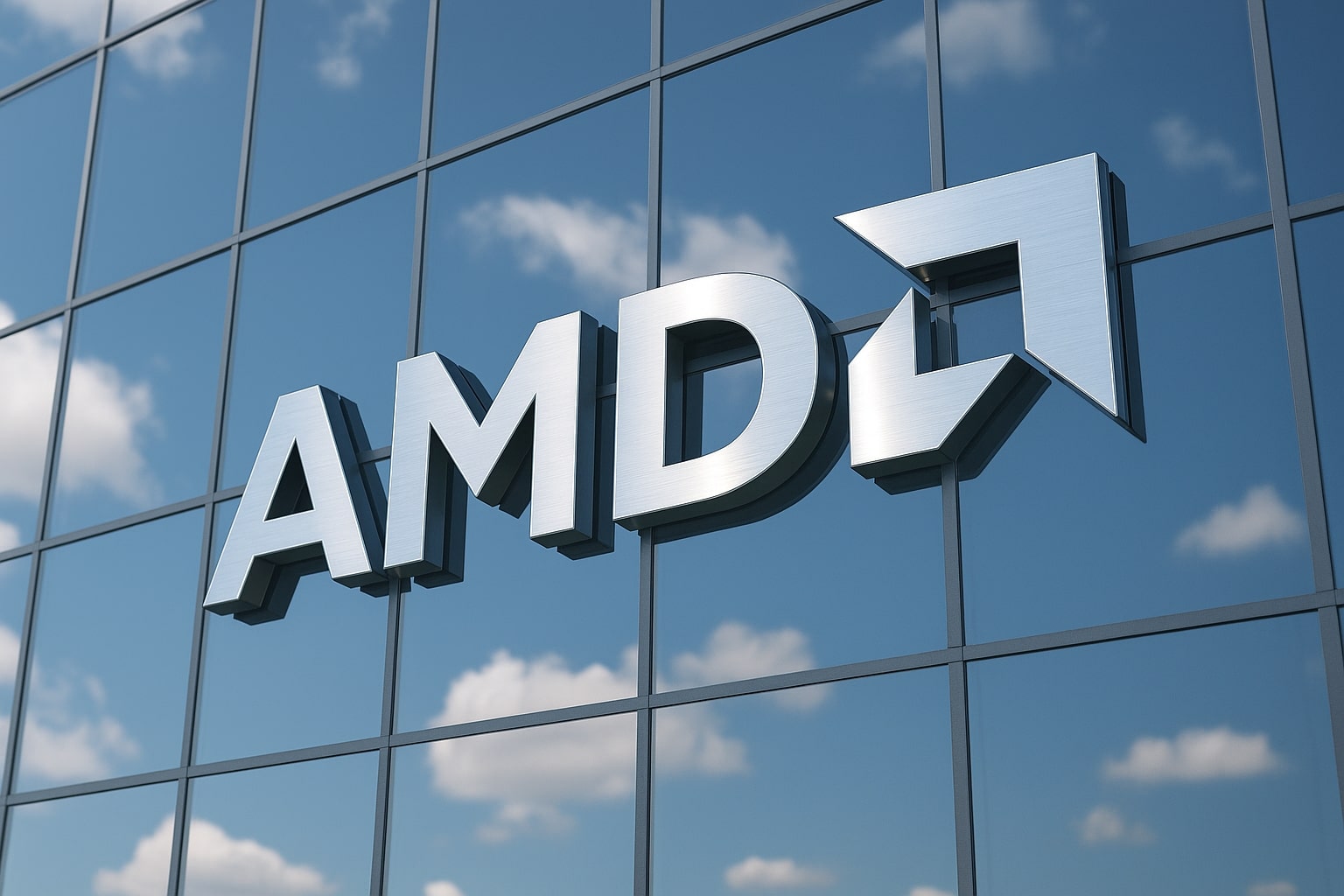
Oracle Stock Price Forecast - ORCL Shares Tanks to $200 Amid Debt-Fueled AI Push — Cloud Backlog Holds Promise
Despite heavy leverage and negative free cash flow, Oracle’s $455 billion contract backlog and hyperscaler deals hint at long-term upside above $300 | That's TradingNEWS
Oracle Corporation (NYSE:ORCL) — Leveraged AI Expansion Meets Market Skepticism Amid 40% Drawdown
From $345 Peak to $200 Reality: Oracle’s Debt-Fueled AI Bet Faces Market Stress
Oracle Corporation (NYSE:ORCL) trades at $200.91, down nearly 41% from its all-time high of $345.72, giving the software and cloud giant a $573 billion market capitalization. The stock’s P/E ratio sits at 46.5, while its dividend yield hovers at 1.0%. The sharp valuation compression came after investors reassessed the company’s $100.6 billion net debt, aggressive AI capex plans, and the sustainability of its cloud backlog expansion.
At the height of the euphoria in September, Oracle briefly joined the trillion-dollar discussion when its fiscal Q1 results — $14.9 billion in revenue (+12% YoY) and non-GAAP EPS of $1.47 — triggered a 37% single-day surge, its best rally since 1993. But optimism quickly reversed as markets questioned the company’s capital structure and cash generation. Credit default swaps on Oracle’s five-year debt widened to 100–110 basis points, the highest since 2022, reflecting a 7–8% implied five-year default probability.
Backlog and Growth Targets: $455B RPO Positions Oracle as AI Infrastructure Core Player
Oracle’s most striking strength lies in its Remaining Performance Obligations (RPO) — effectively its backlog — which surged 359% year-over-year to $455 billion in fiscal Q1 2026. Management guided this figure will surpass $500 billion as new hyperscale contracts ramp through 2026. The backlog now equals 4.5x Oracle’s total debt, offering long-term revenue visibility unmatched by most peers.
The largest contributors include a $300 billion OpenAI compute deal and $20 billion from Meta Platforms (NASDAQ:META). New AI workloads are driving exponential infrastructure demand — Oracle expects Oracle Cloud Infrastructure (OCI) to account for 75% of revenue by FY2030, equating to $166 billion of annual OCI sales at full maturity. The firm estimates 30–40% gross margins on long-term AI cloud contracts, which could generate up to $65 billion in annual gross profit by the decade’s end.
Debt Burden and Cash Flow Pressure: A Balance-Sheet Tug-of-War
Oracle’s debt-to-equity ratio currently exceeds 4.1x, among the highest in Big Tech. Total liabilities rose 17.2% YoY to $155.78 billion, while total equity stagnated at $24.67 billion. Net operating cash flow for the quarter reached $8.14 billion (+9.6%), but massive infrastructure spending pushed investing cash flows to –$8.72 billion, leaving free cash flow down 69% to $1.55 billion.
Levered free cash flow turned negative $2.83 billion on a trailing twelve-month basis, compared to $10.45 billion positive in FY2024. Oracle’s capex exploded to $27.4 billion, quadruple the prior year’s $6.87 billion, reflecting aggressive GPU and data center expansion across the U.S., U.K., and Japan. Moody’s maintains a Baa2 rating (negative outlook), S&P holds BBB (negative), and Fitch is the most constructive with BBB (stable), expecting leverage to normalize toward 3.5x EBITDA by FY2026 as OCI monetization scales.
AI Infrastructure Expansion and Competitive Position
Despite its debt, Oracle remains integral to the AI oligopoly alongside NVIDIA (NASDAQ:NVDA), Microsoft (NASDAQ:MSFT), and Amazon (NASDAQ:AMZN). Unlike cash-rich hyperscalers, Oracle is financing its growth through leverage, betting that demand from OpenAI, xAI, and Meta will more than offset near-term financial strain. CEO Larry Ellison’s decision to pursue physical GPU-rich infrastructure rather than rely on third-party capacity differentiates Oracle from cloud-light peers like Salesforce or SAP.
Its cloud services and license support revenues rose 28% YoY, and OCI climbed 55%, far outpacing traditional software growth. If Oracle executes successfully, OCI could generate operating leverage similar to AWS’s 2018–2021 phase — with EBIT margins rising from 18% to 35% within five years.
Market Repricing and Investor Sentiment
Oracle’s 40% correction reflects both macro tightening and investor skepticism toward AI-related capex. The stock’s implied volatility surged, with options markets pricing a 9.8% earnings swing ahead of Q2 results on December 8, 2025 — the largest implied move in three years.
The equity selloff contrasts with Oracle’s long-term revenue trajectory, now guided to reach $225 billion by FY2030, up from $57.4 billion in FY2025. EPS is projected to compound 28% annually, reaching $8 per share by FY2028. Based on that outlook, a 30x P/E implies a $240 price target, approximately 20% upside from current levels, with PEG near 1.5 (assuming 20% growth).
Valuation Metrics and Price Targets
Oracle’s forward P/E stands at 30.07, compared to an industry median of 24.8, reflecting optimism about OCI scalability. Consensus 12-month price targets range from $225 (bear case) to $350 (bull case), implying 10–70% potential upside.
At $200.91, the stock trades 20% below its estimated intrinsic value. Analysts upgraded 28 times in 90 days, versus only 8 downgrades, citing undervaluation and overly discounted credit risk. Wall Street consensus now rates the stock Buy (4.19/5), while quant models remain conservative at Hold (3.36/5).
Technical Picture: Oversold but Structurally Intact
Technically, NYSE:ORCL finds support at $198–$200, aligning with the December 2024 high. The RSI at 34.6 signals oversold conditions, and price remains just under the 200-day moving average ($206.7), still upward-sloping — a sign that the long-term trend remains constructive.
Volume-weighted data shows strong accumulation near $190–$205, suggesting institutional buyers are stepping in. Resistance lies at $235–$240, while a breakout above $250 could initiate a recovery trend toward the $280–$300 range.
Read More
-
Meta Stock Price Forecast - META Shares Rises to $648 as AI Investment Drives Ad Growth
28.11.2025 · TradingNEWS ArchiveStocks
-
XRP Price Forecast - XRP-USD Steadies at $2.20 as XRP ETF Demand Surges and Exchange Supply Tightens
28.11.2025 · TradingNEWS ArchiveCrypto
-
Oil Price Forecast - WTI (CL=F) Recovers to $59.23 While Brent (BZ=F) Steadies at $63
28.11.2025 · TradingNEWS ArchiveCommodities
-
Stock Market Today - Wall Street Rises as Dow Jones (^DJI) Climbs to 47,730, S&P 500 (^GSPC) at 6,842, and Nasdaq (^IXIC) Rebounds After CME Outage
28.11.2025 · TradingNEWS ArchiveMarkets
-
GBP/USD Price Forecast - Pound Climbs to 1.3240 as Dollar Falls and UK Budget Strengthens Fiscal Confidence
28.11.2025 · TradingNEWS ArchiveForex
Macro and Peer Context: Debt vs. Growth
Compared with peers, Oracle’s balance sheet is the most leveraged among Big Tech. Net debt of $100.6 billion contrasts with Microsoft’s $47 billion net cash and Amazon’s $71 billion debt load. However, Oracle’s gross margin near 74% remains competitive, and its return on capital at 8.8% exceeds Salesforce and SAP’s averages.
The broader macro landscape — with Fed rate cuts expected in 2026 and AI infrastructure demand exceeding $5.2 trillion in global capex by 2030 (McKinsey) — gives Oracle breathing room to refinance and compound operational leverage as cash flows catch up with investments.
TradingNews.com Verdict
Oracle (NYSE:ORCL) faces its most ambitious transformation in two decades — shifting from a traditional software vendor to a capital-intensive AI infrastructure power. The stock’s 41% drawdown is justified by its balance-sheet strain, yet the market may be overestimating short-term risk relative to its massive contracted backlog. With $455 billion in future revenue obligations, expanding partnerships, and industry-leading OCI growth, Oracle’s long-term trajectory remains compelling.
Verdict: BUY — accumulate between $190–$205, short-term target $240, long-term fair value $300–$320 once debt leverage normalizes and OCI profitability materializes by FY2027.


















